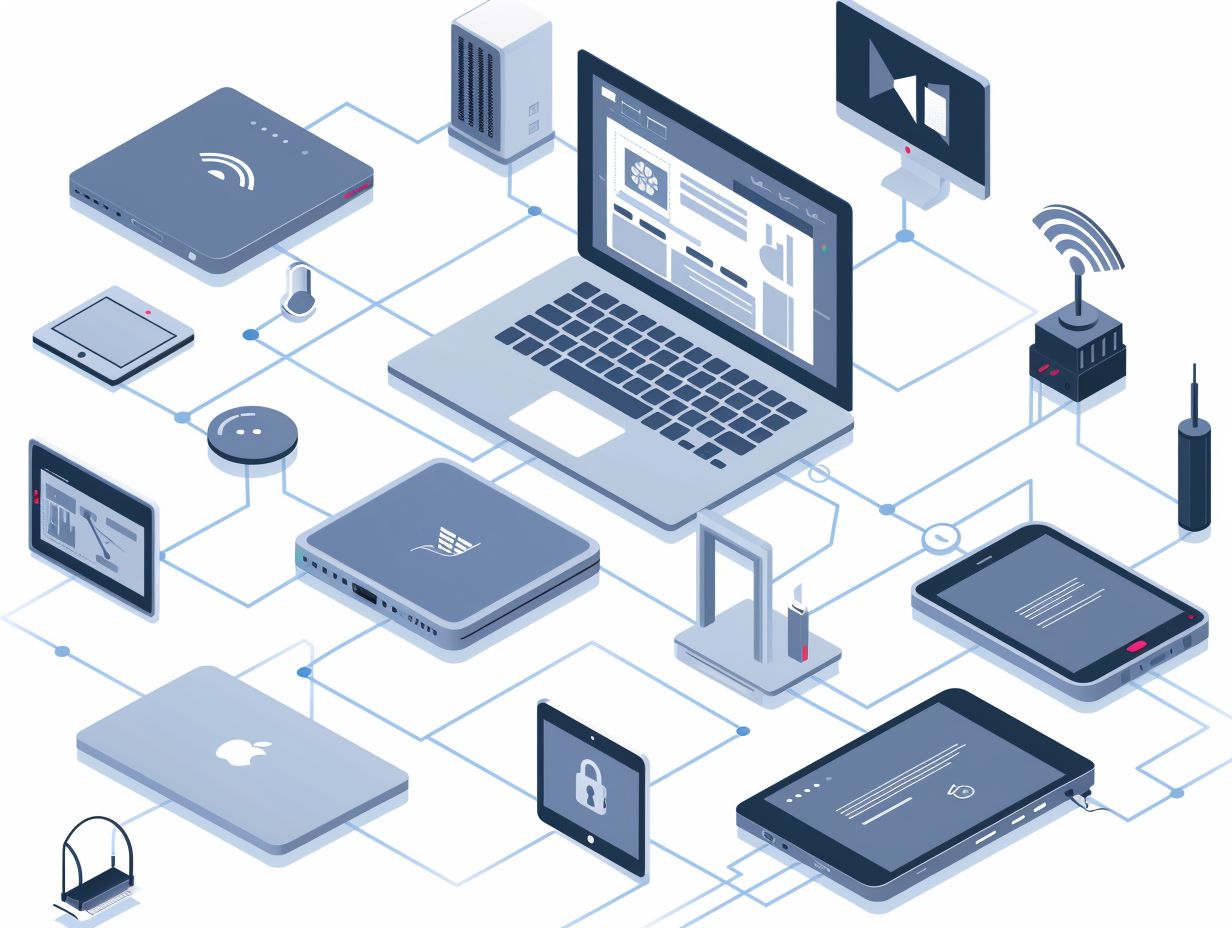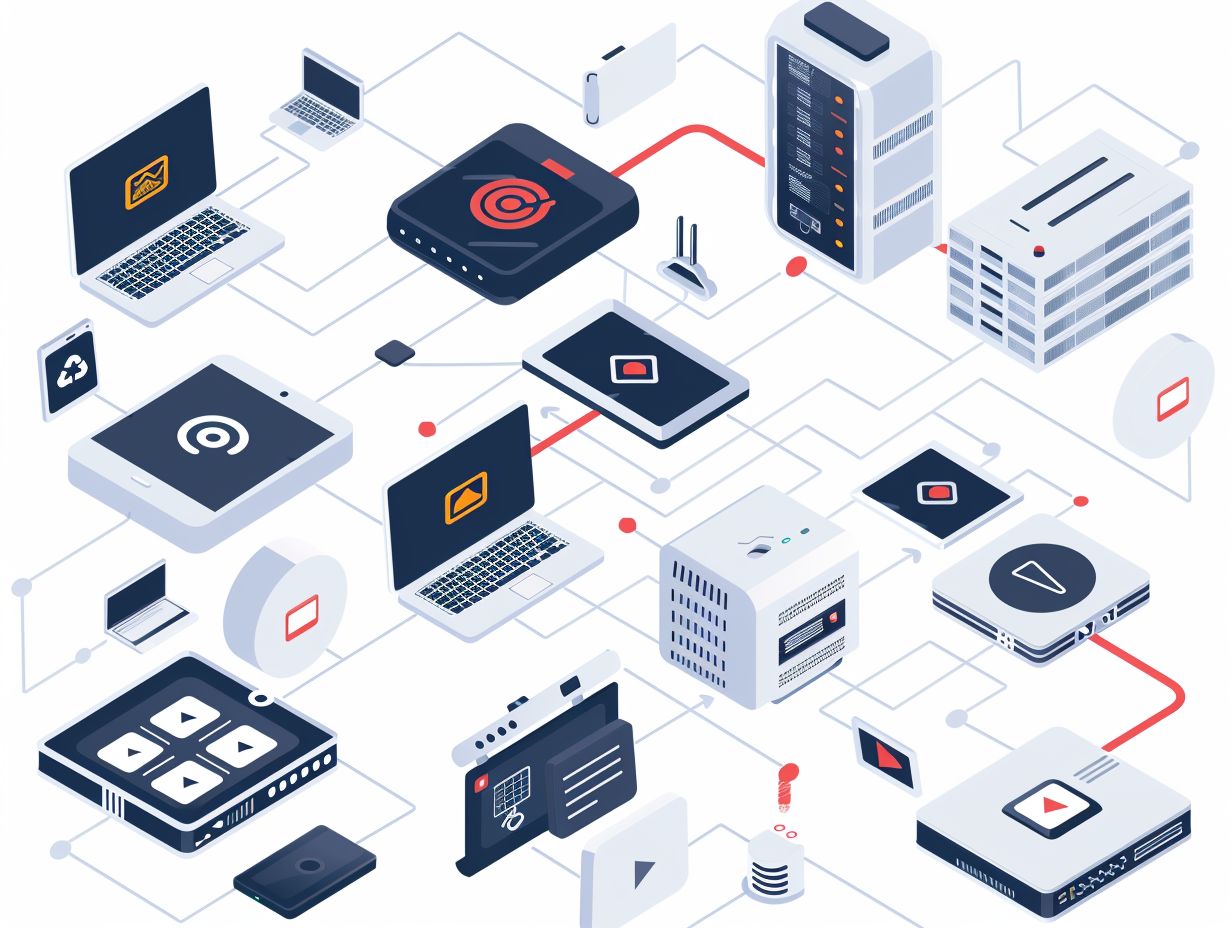In the realm of networking, incident response and forensics are essential components for safeguarding the security and reliability of systems. This article will examine the fundamental terms and principles associated with incident response in CCNA, emphasizing its significance and alignment with network security.
Covering everything from readiness for an incident to the execution of forensics, the discussion will encompass the tools, methodologies, and recommended approaches for efficient incident response and forensics in CCNA. Remain engaged to gain insight into proactive measures and tactics that can enhance the safety and resilience of your network.
Key Takeaways:

Explanation of Key Terms and Concepts
Understanding key terms and concepts in the realm of cybersecurity is critical for professionals in the field. Digital forensics serves a crucial role in determining the scope of a cybersecurity breach by scrutinizing digital artifacts to unveil the root cause of incidents. It assists in resolving intricate cybercrimes and furnishes significant evidence for legal proceedings.
On the other hand, incident response concentrates on efficiently managing and recuperating from security breaches, lessening damage, and averting future incidents. Cybersecurity, as a broader discipline, establishes the groundwork of defense mechanisms against ever-evolving cyber threats, encompassing proactive measures such as vulnerability assessments, security audits, and threat intelligence to protect valuable assets.
The Role of Incident Response in CCNA
The role of incident response within the CCNA (Cisco Certified Network Associate) framework is crucial in preparing network professionals like yourself to effectively detect, respond to, and recover from security breaches and cyber incidents. CCNA certification provides you with the necessary skills and knowledge to address various aspects of network security, with incident response being a fundamental part of your training.
By integrating incident response training into the CCNA curriculum, cybersecurity professionals such as yourself are not only equipped with technical skills but also develop a comprehensive understanding of proactive measures to prevent security threats. Recognizing the significance of quickly detecting and containing breaches is essential in the rapidly changing landscape of cyber threats. This training focuses on real-world scenarios and practical exercises to ensure that you are well-prepared to analyze, mitigate, and resolve security incidents effectively in network environments.
Importance and Integration with Network Security
Understanding the importance of incident response in the context of network security is crucial for safeguarding against evolving threats and vulnerabilities. Effective incident response practices enhance the overall resilience of network infrastructure by enabling rapid detection, containment, and mitigation of security incidents.
By swiftly identifying and isolating security incidents, you can prevent potential data breaches and minimize the impact on your systems. Incident response plays a pivotal role in enhancing forensic investigations post-incident, providing valuable insights for strengthening future security measures. Plus bolstering defenses, a well-executed incident response strategy fosters a culture of proactive risk management within your organization, ensuring a steadfast and proactive approach to addressing security concerns.
Preparing for an Incident

Incorporating proactive measures for potential security incidents is essential in implementing strong incident response practices. By formulating thorough response plans, organizations can enhance the efficiency of their responses to breaches, reduce downtime, and effectively manage the repercussions of cyberattacks.
These response plans commonly entail the establishment of incident response teams, defining communication protocols, and conducting routine training and drills to ensure all staff members are adequately prepared to promptly and proficiently address security incidents. Organizations frequently conduct risk assessments and scenario planning to pinpoint potential vulnerabilities and devise proactive strategies for addressing them proactively, even before a cyber incident transpires.
Creating a Response Plan
Incorporating a structured response plan is a key element of digital forensics and incident response (DFIR). These plans delineate the procedures, protocols, and steps to be implemented following a security incident. Routine audits and evaluations of these response plans are essential to guarantee their efficacy and applicability in dealing with evolving threats.
The significance of these audits lies in their ability to help organizations pinpoint any deficiencies or vulnerabilities in their response strategies. Through comprehensive audits, companies can confirm the effectiveness of their incident management procedures and ensure their alignment with industry standards and compliance requirements. Audits offer a platform for organizations to enhance their response plans by integrating insights from past incidents and emerging cybersecurity trends. This continual process of auditing and refining response plans is imperative for maintaining readiness and resilience in the face of cyber threats.
Conducting Forensics in CCNA
When conducting digital forensics within the CCNA framework, you must follow a systematic approach to investigate security incidents, analyze digital evidence, and determine the root causes of breaches. By utilizing advanced tools, techniques, and methodologies, you can uncover crucial insights into cyber threats and intrusions.
Digital forensics experts utilize a combination of software and hardware tools to retrieve, preserve, and analyze data from a variety of devices and networks. It is imperative to maintain the chain of custody to ensure the integrity of evidence throughout the investigative process. Adhering to best practices in evidence collection and documentation is essential for effectively presenting findings in legal proceedings. By mastering these techniques, you can help safeguard organizations against future cyber threats and strengthen overall security protocols.
Tools and Techniques for Investigation
Utilizing a diverse set of tools and techniques is essential when conducting effective digital forensics investigations. You must leverage a range of resources, from malware analysis and log parsing to scripting and threat intelligence integration, in order to uncover insights, identify threats, and enhance your incident response capabilities.
Malware analysis plays a crucial role in dissecting malicious code to understand its behavior and potential impact on a system. Scripting languages like Python or PowerShell allow for the automation of repetitive tasks and the streamlining of processes.
Log analysis is another vital component, involving the examination of system logs to find traces of suspicious activities that can help you track the timeline of events and piece together the sequence of incidents. By combining these methodologies, digital forensic analysts can reconstruct the chain of events leading up to a security breach and develop effective mitigation strategies.
Best Practices for Incident Response and Forensics

Implementing best practices in incident response and digital forensics is essential for mitigating cyber threats and enhancing organizational resilience. Proactive measures such as establishing a Security Operations Center (SOC), leveraging threat intelligence, and conducting regular audits contribute to a robust security posture.
By instituting a structured incident response plan, you can efficiently detect, analyze, and contain security incidents. The integration of threat intelligence not only bolsters your ability to identify potential threats but also enables preemptive actions against emerging risks. Regular training and simulation exercises within the SOC enable your staff to respond swiftly to incidents, minimizing impact. Collaborating with industry peers and information-sharing forums can provide valuable insights into evolving threat landscapes, further fortifying your cybersecurity defenses.
Proactive Measures and Strategies
For enhance incident response capabilities and minimize the impact of security breaches, you must implement proactive measures and strategic approaches. Utilizing threat intelligence, conducting routine assessments, and deploying security controls are essential steps that organizations should take to strengthen their defenses and proactively tackle emerging threats.
Threat intelligence offers valuable insights into potential risks and vulnerabilities, enabling organizations to stay proactive in the face of cyber threats. Regular audits are crucial for identifying weaknesses in current security protocols and procedures, allowing for prompt adjustments to ensure robust protection. Security controls serve as the initial line of defense, preventing unauthorized access and thwarting malicious activities. By proactively incorporating these components into their cybersecurity framework, businesses can not only respond efficiently to incidents but also diminish the likelihood of breaches occurring in the first place.
Frequently Asked Questions
What is an incident response plan and why is it important for CCNA professionals?
An incident response plan is a documented set of procedures and protocols that outlines how an organization will respond to a cyber security incident. It is important for CCNA professionals because it helps them efficiently and effectively mitigate the impact of an incident on the organization’s network and infrastructure.
What are the key steps in an incident response plan for CCNA professionals?

The key steps in an incident response plan for CCNA professionals include preparation, identification, containment, eradication, recovery, and lessons learned. These steps ensure a systematic and organized response to a cyber security incident.
How does forensic analysis play a role in incident response for CCNA professionals?
Forensic analysis involves the collection, preservation, and analysis of digital evidence related to a cyber security incident. For CCNA professionals, this helps determine the cause and impact of the incident, as well as identify any vulnerabilities in the network.
What are some common tools used in forensic analysis for CCNA professionals?
Some common tools used in forensic analysis for CCNA professionals include network and system monitoring tools, data recovery and analysis software, and malware analysis tools. These tools help gather and analyze digital evidence to support incident response efforts.
How can CCNA professionals stay updated with the latest incident response and forensics techniques?
CCNA professionals can stay updated by regularly attending trainings, workshops, and conferences specifically focused on incident response and forensics. They can also join online communities and forums to share knowledge and keep up with industry developments.
What are some best practices for CCNA professionals when responding to a cyber security incident?
Some best practices for CCNA professionals include having a well-documented incident response plan, regularly conducting drills and exercises to test the plan, having a team of trained incident responders, and maintaining communication with relevant stakeholders throughout the response process.
